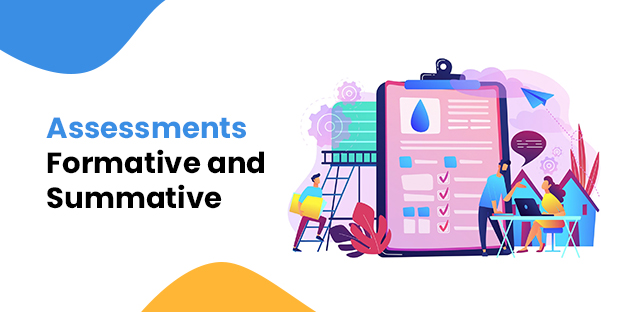How to spot a struggling student online and what to do about it
Teachers are using technology to make teaching more engaging. The increasingly flexible delivery of instruction and submission of home assignments provide multiple pathways and opportunities to refine and reform the teaching and learning experience. The one-size-fits-all approach is obsolete, and education is moving toward a more personalized learning approach globally using technology. Schools have transformed where children get their gadgets- iPad or tablets to school. Technology is at the helm of education- teachers are using technology to make lessons more engaging. ‘Smart Classes’ have active technology for lesson delivery. Teachers use classroom management apps for lesson planning, formatives, and deriving data to personalize learning and inform future instruction.
There are educators around the country supporting students in powerful ways online. Online learning gives students convenience and flexibility, which is especially critical for adult students who work and return to school. But several barriers are standing in the way of student success online. In the Journal of Learning Design, researcher Jenna Gillett-Swan writes: “The online environment presents added challenges for the external or isolated learner, particularly [concerning] engagement, access, community, and support.” The issues that online learners experience, she writes, include “anxiety associated with using technology; being out of one’s comfort zone; … and the (perceived) inability or difficulty in peer interaction.”
The Struggling Learner-
Spotting a struggling student on time can solve many problems that may arise later.
Signs of a Struggling Student Online:
- Decline in Performance: Watch for a sudden drop in grades, missed assignments, or consistently poor performance on assessments.
- Lack of Engagement: If a student is not participating in online discussions, not asking questions, or not interacting with the course material, it could indicate a lack of engagement.
- Frequent Absences: If a student is consistently absent from online classes or discussions, it might be a sign of struggling or disengagement.
- Incomplete or Late Assignments: Students who consistently submit assignments late or incomplete may be struggling to manage their workload.
- Communication Changes: Notice if a student’s communication style changes, such as becoming more withdrawn, using vague language, or expressing frustration.
- Quality of Work: If a student’s work quality deteriorates significantly compared to their earlier submissions, it could indicate they are struggling.
- Lack of Progress: If a student is not progressing in their understanding of the material over time, it might indicate a struggle to grasp the concepts.

Collaborative Learning
The barriers to online participation that external students may experience are particularly evident in collaborative learning tasks through group work, group presentations and assessments. (Davidson, 2015; Graham & Misanchuk). And the (perceived) inability or difficulty in peer interaction. It stands out in collaborative learning tasks where individuals may be barely navigating the system alone, let alone needing to traverse the complex environments of group interaction and social negotiation.
While group work is an essential element that aids in developing numerous interpersonal and transferable employable skills, online learning may cause disengagement, withdrawal, or ultimate exclusion from engaging with and accessing the course materials and associated learning activities.
Digital Classroom Management Systems offer multiple ways to spot a struggling student. With the help of Group Notes on the Chronicle Cloud app, for instance, teachers can create groups to inform instruction. I make groups according to student competency on Chronicle Cloud and plan the lessons accordingly.
As Boling describes, “The ability of an instructor to facilitate and develop students’ higher-order thinking skills is equally important in both online and face-to-face delivery modes, particularly when seeking to engage students in group activities. While the specific scaffolding may differ for internal and external student cohorts, the outcomes still seek to optimize student learning.”
Assessments-Formative and Summative
Despite the best intentions of teaching staff to provide equitable and beneficial learning experiences for all students, many academic staff members feel they need more support. They must adequately equip themselves to teach wholly (or primarily) online. (Schmidt et al., 2016). At the same time, the online environment provides opportunities for how learners deliver and access education, and assessment practices often need to be expanded in the variety and modes of the offline environment.

Within the context of preservice teacher education, implementing online assessment also enhances their knowledge and understanding of ways to use new technologies in their future teaching practice (Blackley & Sheffield, 2015).
With Formative Assessments, the GradeBook, and Rubric on the Chronicle Cloud app, teachers can choose between taking quick Formative on the go or taking summative to gauge student progress. The Formatives spot the struggling student immediately and allow the teacher to write a specific note to access later for future instruction. The traffic light system motivates students to engage better in class and instantaneously. I recall Nancy being very distracted the other day. All I had to do was to show her the traffic lights before the start of the poetry recitation. Her concentration increased miraculously!
An increasingly digital world highlights the importance of proficiency in interaction and experience using technology as a communicative medium. In addition to social relationship building and enhancing the student experience online, other factors that play a significant role in student success in the online space include cognitive complexity and intellectual stimulation. Boling described, “it is now more critical than ever for online instructors to provide students with experiences that challenge their higher-order cognitive skills as opposed to simply transferring content to them.”
Drawing upon the advantages and flexibility inherent within the online environment provides wide-ranging opportunities for assessment that can incorporate a range of technologies uncircumscribed by the technological limitations present in a more traditional, face-to-face environment and presentation modes.
According to Watson, “today’s millennial generation students in K-12 schools are children of a digital age and are typically far more comfortable with technology than their parents and teachers. K-12 online learning is another branch of instructional delivery proliferating and evolving in many directions. It is merging with face-to-face instruction to augment time and meet the needs of all students.”
Attendance In The Classroom
At Chronicle Cloud, we decided to derive value from as daily and mundane a task as attendance to spot the emotional meter of the student early on in the day. The mood emoticons in the ‘Attendance’ feature record the mood of the individual student, a group and the classroom. The teacher can then navigate the instruction accordingly. The feature also helps identify the struggling students, whether they are sad, happy, or neutral. One of the teachers could see a pattern in a student’s emotional state. She decided to scaffold when she spotted and discussed the case with her parents.
Visual Indicators and Data Analytics
Visual indicators on both the teacher and student sides alert you of missing assignments. Do the students submit the class and home assignments on time or after the due date? A Subject or a concept the teacher needs to scaffold or plan further. Acting on time saves a lot of future trouble. An occasional late assignment is not a cause for concern, but more repetitive issues hamper the individual’s and the class’s progress.
Instructors may see excessive messages from students with multiple excuses for late work. These excuses may be legitimate or a more critical call for help. Teachers dig deeper to find the root cause if they find a repeating pattern in the data- whether in a group or individual learning, during Formative Assessments, or even Attendance. Letting students turn in assignments late doesn’t solve anything. When we know the reason, we can dig deeper and offer customized solutions to help students succeed early in the course and all the way through. The app is highly engaging with a seamless user interface.
Rubrics indicate progress on the teacher’s assignment and concept parameters. The teacher gets hands-on data on every student to scaffold the concept and drive learning to optimum levels.
Schools and teachers are vital in supporting success in an online learning environment. And because technology can serve as a barrier for students and instructors, colleges and universities must ensure their online learning platforms and applications are easy to use and work together seamlessly. Educators are becoming increasingly aware of the diversity of their current and future learners. EdTech is moving quickly across verticals and is not confined to the accounts department or the principal’s office.
Quick Tips for struggling learners
- Early Intervention: Address concerns as soon as you notice them. Reach out to the student to offer help and support before the situation worsens.
- Open Communication: Establish a supportive and non-judgmental environment. Encourage the student to share their challenges and concerns.
- Regular Check-ins: Schedule regular one-on-one check-ins to discuss their progress, challenges, and any questions they may have.
- Offer Resources: Provide additional resources such as tutorials, study guides, or supplementary materials to help the student better understand the content.
- Personalized Assistance: Tailor your approach to the student’s needs. Offer extra help, clarification, or guidance on specific topics they’re struggling with.
- Set Achievable Goals: Help the student set small, achievable goals to regain their confidence and track their progress.
- Peer Support: Encourage the student to collaborate with classmates through online discussions or study groups. Peer support can be beneficial.
- Refer to Support Services: If the student’s struggles are more complex, suggest that they reach out to academic support services, counseling, or other relevant resources provided by the institution.
- Flexible Deadlines: Consider providing reasonable extensions for assignments if the student needs more time due to legitimate difficulties.
- Monitor Progress: Keep track of the student’s progress and improvements over time. Celebrate their achievements to boost their motivation.
- Involve Parents/Guardians: For younger students, consider involving parents or guardians in the conversation to provide additional support.
- Empathy and Patience: Approach the situation with empathy and patience. Remember that students have different challenges and learning styles.
Conclusion
Each student is unique, and their struggles might be influenced by various factors. Your willingness to offer support and understanding can make a significant positive impact on their online learning experience. Digital tools and resources aren’t silver bullets that magically transform education. Online learning, blended learning, and the use and implementation of technology can enhance student learning opportunities and, as a result, improve student outcomes. Receiving feedback from the teaching staff and parents and seeing how their feedback informs subsequent practice and delivery in real-time help identify the reason behind the struggling student to inform future instruction.
